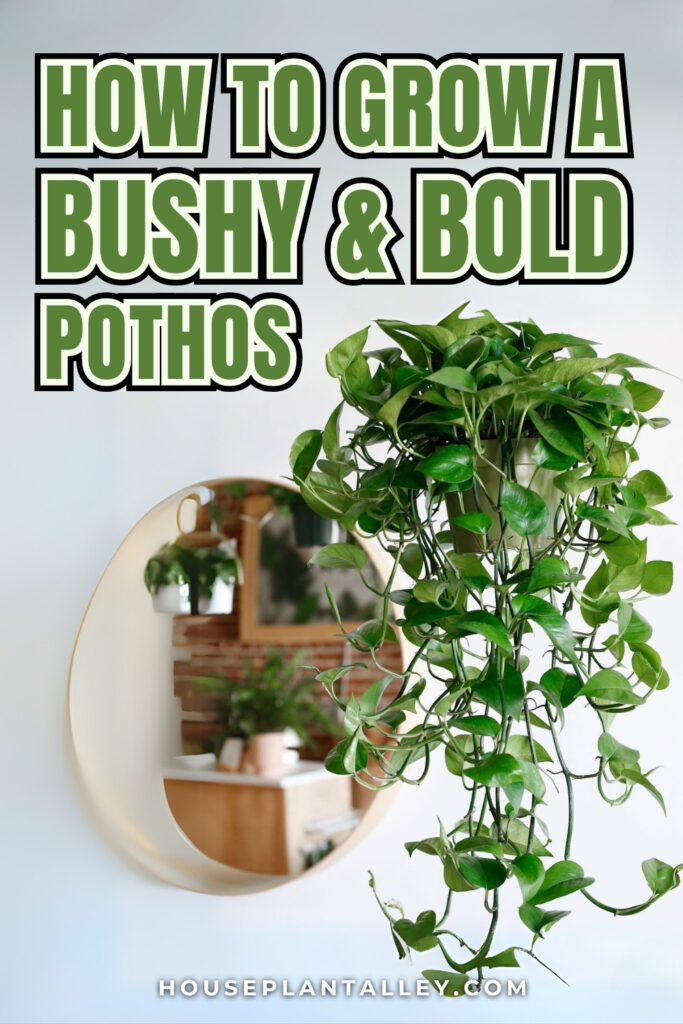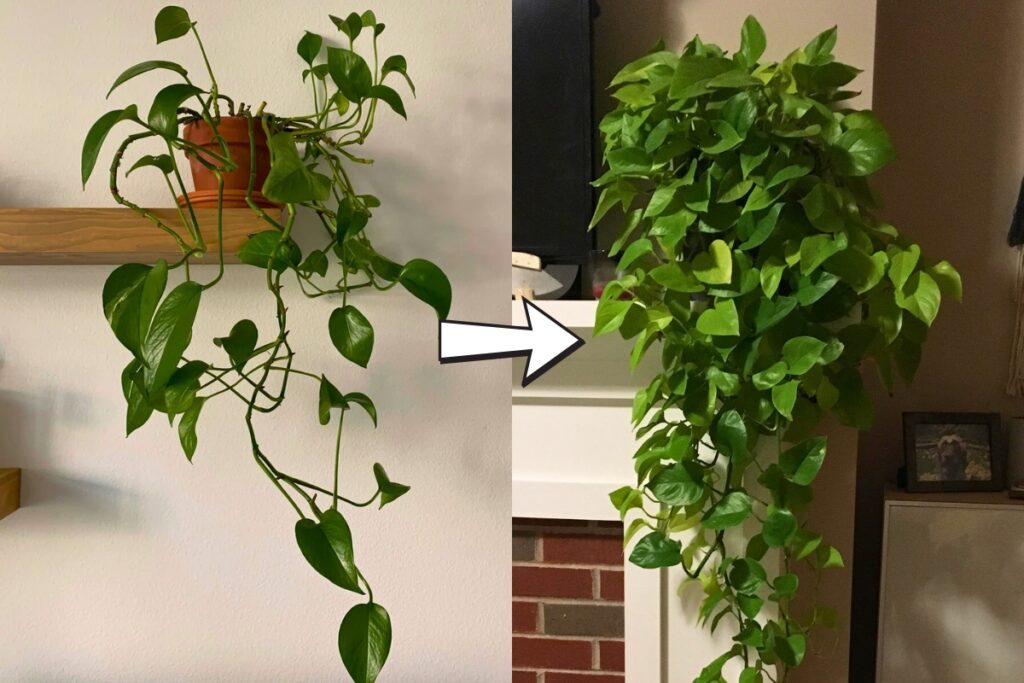When Sarah’s dying pothos transformed into a lush, trailing beauty after she moved it from her dark hallway to a bright corner near her kitchen window, she discovered what most plant parents learn the hard way. You’ll need more than just good intentions to keep your pothos thriving indoors, and the difference between a struggling plant and a showstopper often comes down to mastering eight essential care techniques that most guides completely overlook.

Contents
- 1 Selecting the Perfect Pot and Drainage Setup
- 2 Creating an Optimal Soil Mix for Indoor Growth
- 3 Providing Bright Indirect Light Conditions
- 4 Watering With Quality Filtered Water
- 5 Mastering the Soil Moisture Test Method
- 6 Maintaining Proper Humidity Levels
- 7 Fertilizing During Active Growing Seasons
- 8 Regular Pruning and Plant Rotation Techniques
Selecting the Perfect Pot and Drainage Setup
Why do so many pothos plants struggle to thrive despite being labeled “beginner-friendly”? The answer often starts with pot selection and drainage importance.
You’ll need a container with at least one drainage hole, though more holes work better. Skip the stones-at-the-bottom trick; it won’t substitute for proper drainage. Without adequate drainage, you’re setting up your pothos for root rot and fungal issues.
For hanging displays, choose lightweight coir or plastic pots. Terra cotta and ceramic work perfectly for shelf placement, offering stability your trailing vines need.
Creating an Optimal Soil Mix for Indoor Growth
Once you’ve secured proper drainage, your pothos needs the right growing medium to flourish indoors. Garden soil won’t cut it—it retains too much moisture and harbors unwanted pests. Standard potting soil alone isn’t ideal either.
Create your own mix using equal parts potting soil, perlite, and peat moss or coconut coir. These soil components provide proper drainage while retaining necessary moisture. The pH balance should stay between 6.1-6.5 for best nutrient absorption.
Making your own mix costs less when you’re caring for multiple plants. Your pothos will reward you with faster growth and healthier foliage.

Providing Bright Indirect Light Conditions
Your pothos craves bright indirect light to achieve its impressive growth potential of 12 inches per month. Plant placement near south or west-facing windows delivers excellent light intensity without harmful direct exposure. Position your pothos where it receives abundant brightness, but not scorching rays.
Morning sun won’t damage leaves, actually boosting your plant’s energy levels. If afternoon sunlight seems too intense, hang sheer curtains to filter harsh beams. Proper lighting maintains vibrant leaf coloration and stunning variegation patterns.
Watch your pothos respond to ideal conditions with faster growth, fuller foliage, and healthier appearance throughout the growing season.
Watering With Quality Filtered Water
While proper lighting sets the foundation for growth, water quality plays an equally critical role in your pothos’s health and development. Tap water often contains chlorine and other chemicals that create salt build-up in soil, stunting your plant’s growth over time.
Test your local water quality first. If it’s questionable, install a filtration system or use a separate filter pitcher. Alternatively, leave tap water out for 24-48 hours to reduce chlorine levels naturally.
Don’t rely on strict watering schedules. Instead, check soil moisture by inserting your finger two inches deep, adjusting watering frequency based on seasonal changes and home conditions.
Mastering the Soil Moisture Test Method
How do you know when your pothos actually needs water without guessing or following rigid schedules? Master the finger test method for accurate soil moisture assessment. Insert your finger straight down into the soil, reaching exactly two inches deep. If the soil feels completely dry at this depth, it’s time to water.
Testing techniques vary based on your comfort level. Moisture meters provide digital readings if you prefer precise measurements. However, the finger method remains most reliable since seasonal changes affect soil moisture differently. Check weekly, but water only when those top two inches feel bone dry.
Maintaining Proper Humidity Levels
Beyond soil moisture, pothos plants crave higher humidity levels that most homes can’t naturally provide. Your indoor air typically hovers around 30-40% humidity, while pothos thrive at 50-60%. Brown leaf tips and stunted growth are clear humidity indicators that your plant needs more moisture.
You’ve got several humidity sources to choose from. Run a humidifier nearby, place a water-filled tray beneath the pot, or group plants together for a micro-humid environment. Regular misting works too, but don’t overdo it. Check those leaf tips weekly—they’ll tell you if your humidity game’s working.
Fertilizing During Active Growing Seasons
Since pothos enter their most vigorous growth phase during spring and summer, you’ll need to fuel that energy with regular fertilization. Choose a balanced, water-soluble fertilizer for best results. Application frequency should follow a 4-6 week schedule during active months.
Dilute your fertilizer to half-strength to prevent nutrient burn. This gentler approach protects delicate roots while providing essential nutrients. Skip fertilizing completely during fall and winter when growth naturally slows.
Different fertilizer types work well, but liquid options offer the most control over concentration. Always water your pothos before applying fertilizer to avoid shocking the roots.
Regular Pruning and Plant Rotation Techniques
While fertilizing fuels your pothos’s growth, regular pruning shapes that energy into a fuller, healthier plant. Use clean, sharp scissors to trim long vines during spring and summer, cutting just above leaf nodes to encourage branching. Remove yellow or damaged leaves immediately to redirect energy toward healthy growth.
Effective plant rotation prevents lopsided development and weak stems. Turn your pothos a quarter-turn every two weeks, ensuring all sides receive equal light exposure. Watch for growth patterns leaning toward windows—this signals it’s rotation time. These pruning techniques and consistent plant rotation create balanced, bushy growth instead of straggly, uneven vines.
